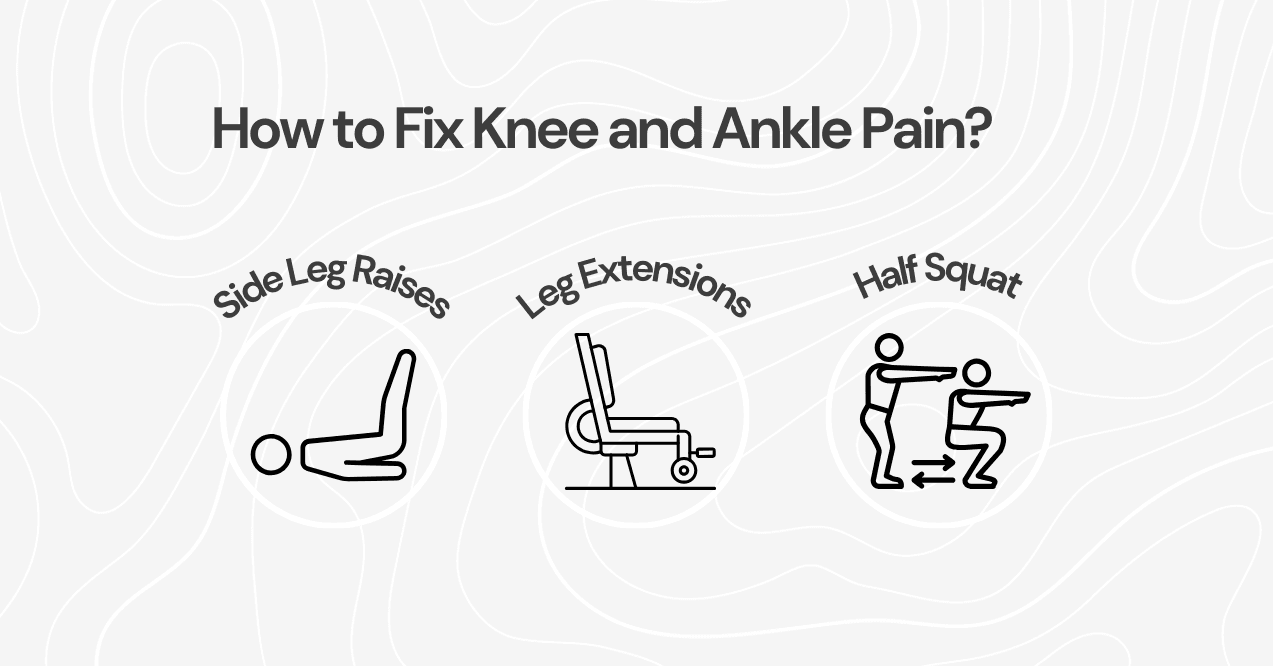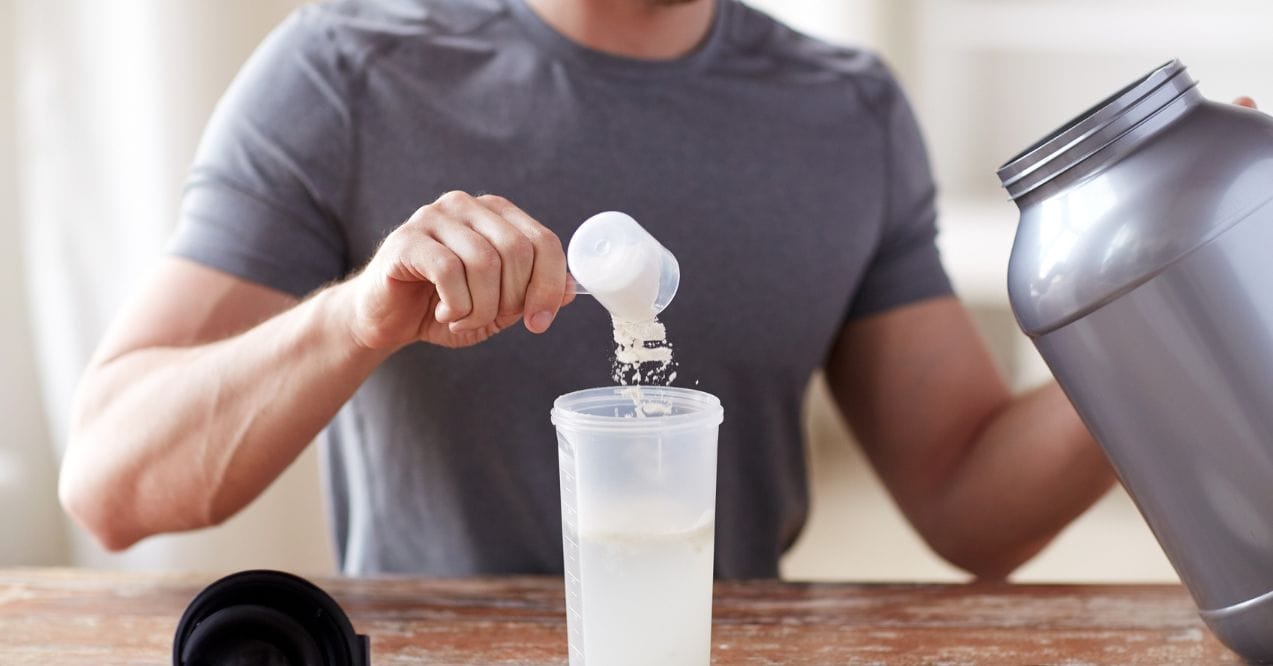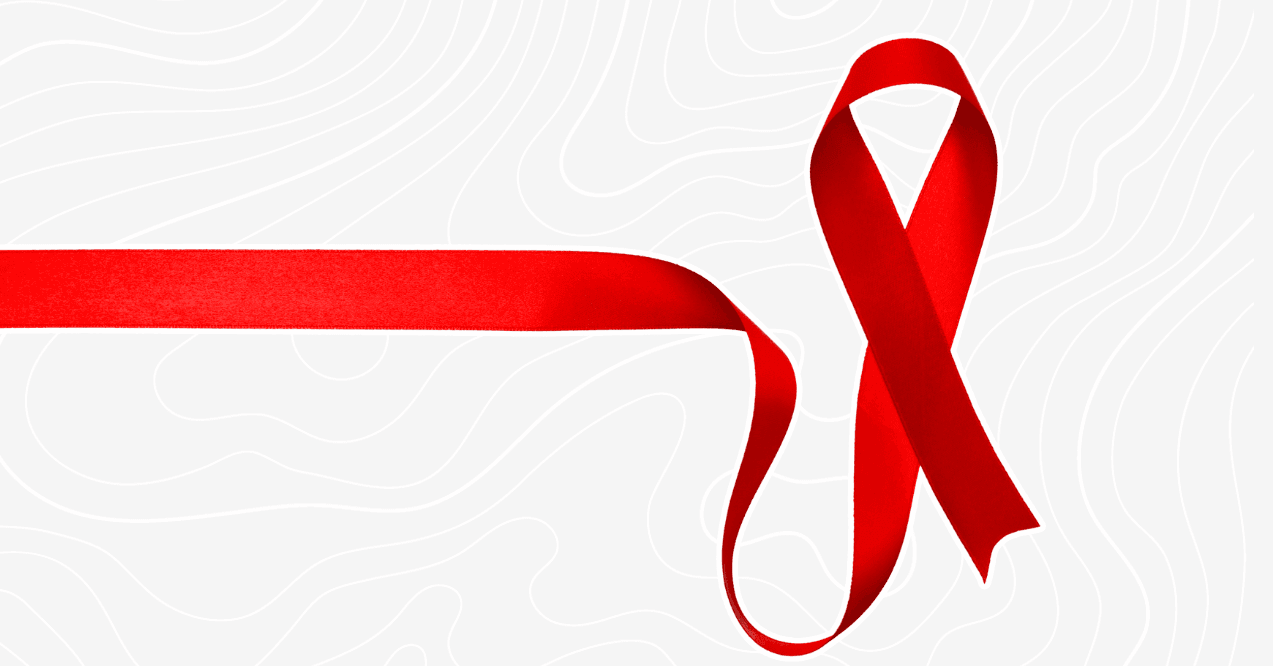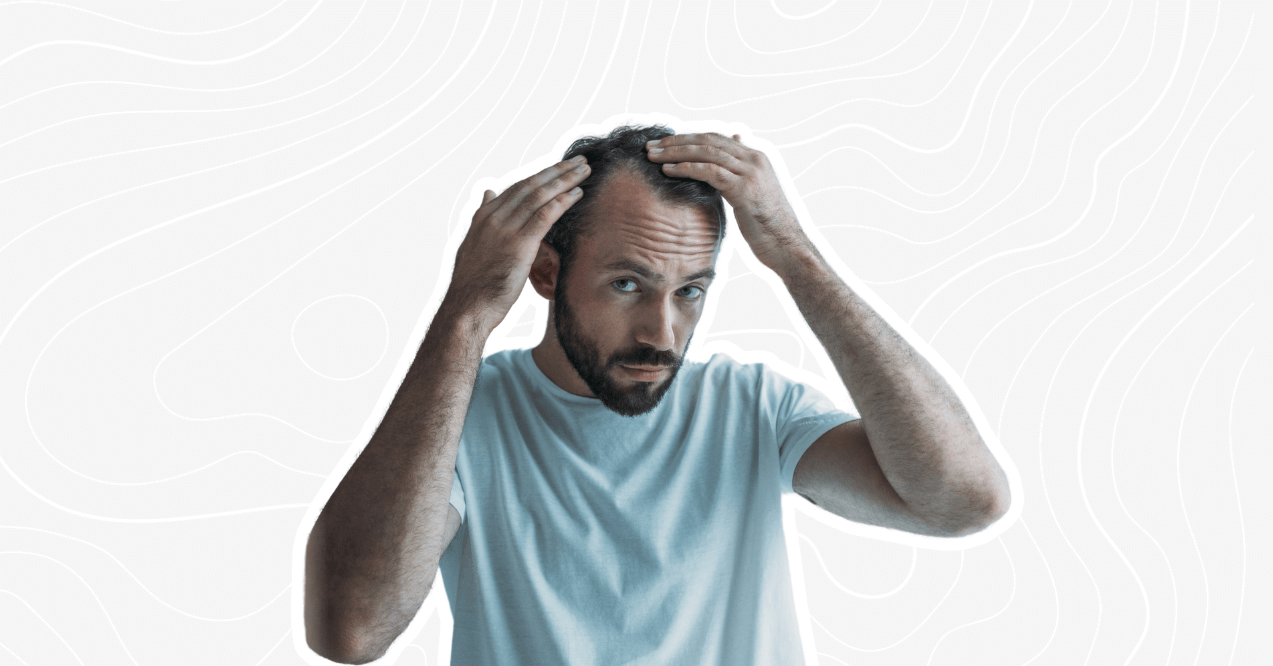Knee and Ankle Pain Causes and How to Fix It
Knee and ankle pain is a common issue that affects people of all ages, often making everyday activities more difficult and diminishing overall quality of life. This pain can stem from a variety of causes, such as sprains, strains, tendinitis, meniscus tears, muscle imbalances, and joint damage. Each of these conditions can result from different activities or underlying health issues, affecting either the soft tissues or the skeletal structure of the knee and ankle joints.
Understanding these causes is crucial as it helps individuals take appropriate steps to alleviate discomfort and support joint health. Along with practical exercises, incorporating muscle recovery supplements can aid in reducing soreness and speeding up recovery, while performance supplements may help improve joint stability and enhance overall physical resilience. Therefore, in this blog post, we will explore the common reasons behind knee and ankle pain and suggest practical exercises that may promote joint function and maintain mobility.
Key findings:

Why Do My Knees and Ankles Hurt?
Knee and ankle pain can arise from various conditions, each affecting your joints in its own way. Understanding these causes can help you take proactive steps to improve joint health and maintain your daily activities. Here are some of the most common reasons for pain in these essential joints:
Sprains and Strains
Sprains and strains are some of the most frequent culprits behind knee and ankle pain. Though often used interchangeably, they refer to injuries to different joint structures. A sprain occurs when ligaments – the tough tissues connecting bones – are overstretched or torn. This is common in the ankle, especially when the foot turns awkwardly, which can happen during your calisthenic leg workout or even when stepping on uneven ground.
A strain, on the other hand, refers to damage to a muscle or tendon, the fibers connecting muscles to bones. Strains in the knee often affect the large muscles like the quadriceps or hamstrings that support the joint. Both sprains and strains can result from sudden injuries or repetitive stress over time.
Tendinitis
Tendinitis is the inflammation of a tendon, typically due to overuse or repetitive stress over time. In the context of knee and ankle pain, two common forms are patellar tendinitis (“jumper’s knee”) and Achilles tendinitis. Both types of tendinitis cause pain and tenderness at the point where the tendon attaches to the bone. The discomfort usually worsens with activity and can significantly limit the range of motion.
Meniscus Tears
Focusing on the knee, meniscus tears are a frequent issue, especially among athletes. The meniscus is a piece of cartilage that cushions and stabilizes the knee joint. Tears can occur due to trauma or as a result of degenerative changes over time. Symptoms of a meniscus tear include pain, swelling, and a popping sensation during movement. Depending on the severity of the tear, it may hamper the knee’s ability to move smoothly, sometimes causing it to lock or catch during motion.
Muscle Imbalance
Muscle imbalances around the knee and ankle can also contribute to pain. When certain muscles are stronger or more developed than others, they can pull the joints out of alignment, causing uneven stress on the bones and tissues. For example, an imbalance between the quadriceps and hamstrings can strain the knee joint, leading to pain and instability. Similarly, weak hip muscles can affect knee alignment, exacerbating discomfort in both the knee and ankle. These imbalances don’t just lead to joint pain—they can also make your legs feel heavy after a workout. If you’ve ever noticed Legs So Heavy After a Workout, it might be due to muscle fatigue, poor circulation, or improper recovery, which can also contribute to joint strain.
Joint Damage
Joint damage, such as osteoarthritis, rheumatoid arthritis, or post-traumatic arthritis, can also cause knee and ankle pain. This damage involves the wearing down of cartilage, which normally cushions the bones. As the cartilage breaks down, the bones may begin to rub against each other, causing pain and stiffness. If you’ve ever experienced knee pain after an ankle sprain, it could be due to altered walking patterns that place added stress on the knee, worsening any underlying joint conditions.
How to Fix Knee and Ankle Pain?

Managing knee and ankle pain effectively requires exercises that support joint function and promote overall joint health. Incorporating the right movements into your routine can help alleviate discomfort while strengthening the muscles that support these crucial joints. Here are three effective exercises to consider:
Side Leg Raises
Side Leg Raises are a simple yet effective exercise that targets the hip abductors and outer thigh muscles, both of which play a key role in stabilizing the hips and knees. To perform side leg raises:
- Lie on your side with your legs stacked and your body in a straight line. Rest your head on your arm or a pillow for added comfort.
- Slowly raise your top leg as high as possible without shifting your hips or waist, keeping the leg straight.
- Hold the position for a moment at the top, then lower the leg back down in a controlled manner.
- Repeat for several repetitions, then switch sides.
This exercise helps maintain proper hip alignment and reduces strain on the knees—especially helpful for correcting imbalances or weaknesses that may contribute to pain in the knee and ankle joints.
Half Squat
Half Squats are a modified version of full squats, designed to strengthen the lower body—specifically the quadriceps, hamstrings, and glutes—without putting too much strain on the knees. To perform a half squat:
- Stand with your feet hip-width apart. Extend your arms in front of you for balance, if needed.
- Bend your knees and lower your body about halfway into a squat, keeping your back straight and chest lifted.
- Ensure that your knees stay behind your toes as you lower your body.
- Hold the position briefly, then push through your heels to return to the starting position.
Half squats are particularly beneficial for those who experience knee pain after an ankle sprain, as they help build strength in the lower body while enhancing overall joint stability.
Leg Extensions
Leg Extensions are an excellent exercise for strengthening the quadriceps, crucial muscles for knee stability and mobility. This exercise is commonly performed on a leg extension machine, but it can also be adapted for home workouts using a resistance band or ankle weights. Here’s how to perform leg extensions:
- Sit on a chair or bench with your back straight and feet flat on the floor.
- If using a resistance band, loop it around a stable object and then around your ankles. If using ankle weights, simply strap them on.
- Extend one leg at a time, pushing against the resistance and raising your foot until your leg is parallel to the floor.
- Hold briefly, then slowly lower your foot back to the starting position.
- Repeat for several repetitions before switching legs.
Leg extensions are particularly helpful for reinforcing the quadriceps, improving knee strength, and enhancing joint stability. They’re especially beneficial for individuals recovering from knee injuries or those looking to maintain healthy, strong knees.ont of the thigh, thereby supporting the knee joint and alleviating pain in the ankle and knee.
After exploring exercises to help alleviate knee and ankle pain, consider integrating trumeta recovery into your routine. This specially formulated supplement is designed to support joint health and promote overall recovery. This product includes a blend of natural ingredients known for their beneficial properties in supporting tissue health and reducing discomfort associated with physical activity.

By incorporating this supplement, you may experience enhanced comfort during movement and an improved ability to perform daily tasks. Whether you’re recovering from a specific injury or simply looking to maintain joint health as you age, trumeta may provide support to your body’s natural healing processes, helping you stay active and promote comfort.. For best results, combine this supplement with a balanced diet and regular exercise, as recommended by health professionals.
Conclusion
Knee and ankle pain can greatly affect daily activities, but understanding the underlying causes and addressing them proactively is crucial for both recovery and prevention. Issues like sprains, strains, and tendinitis can compromise joint stability and mobility, but targeted exercises—such as side leg raises, half squats, and leg extensions—can strengthen and stabilize these areas.
Maintaining muscle balance and flexibility is key to long-term joint health, helping to reduce the risk of misalignment and stress-related injuries. As always, it’s important to consult a healthcare professional before starting any new exercise routine to ensure it aligns with your individual needs and health goals.
Yes, a knee injury can cause ankle swelling. This occurs when the injury disrupts normal walking patterns or circulation, leading to fluid accumulation in the ankle due to compensatory movements or changes in blood flow.
The knee and ankle are connected through the tibia and fibula, bones that extend from the knee to the ankle, as well as through muscles and tendons that facilitate movement and stability in both joints.
It’s often best to balance rest and gentle activity with knee pain. Rest prevents aggravation, while light walking can maintain mobility and circulation. Consult a healthcare provider to tailor advice to your specific condition.
Advertisement. This site offers health, wellness, fitness and nutritional information and is designed for educational purposes only. You should not rely on this information as a substitute for, nor does it replace, professional medical advice, diagnosis, or treatment. If you have any concerns or questions about your health, you should always consult with a physician or other health-care professional. Do not disregard, avoid or delay obtaining medical or health related advice from your health-care professional because of something you may have read on this site. The use of any information provided on this site is solely at your own risk.







